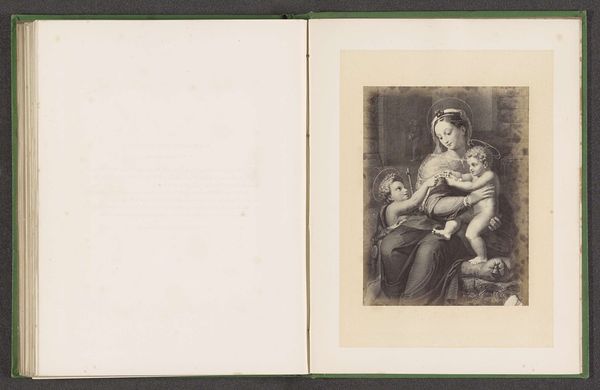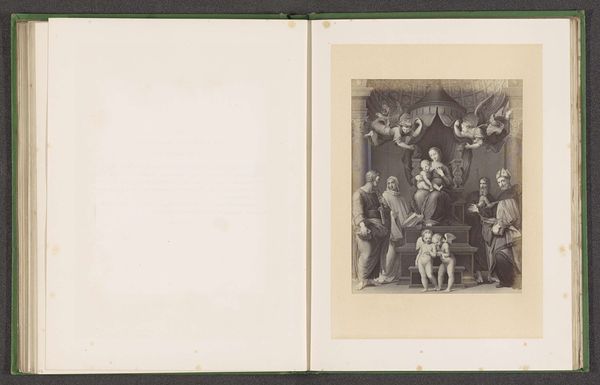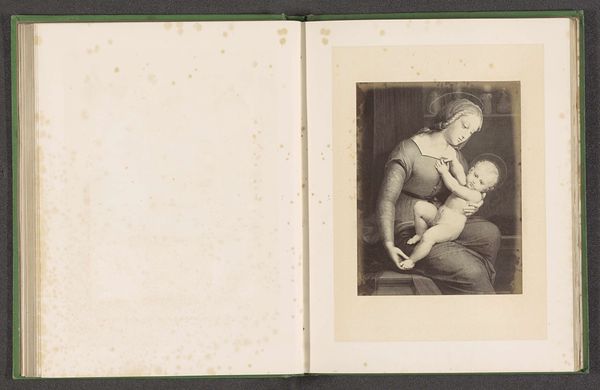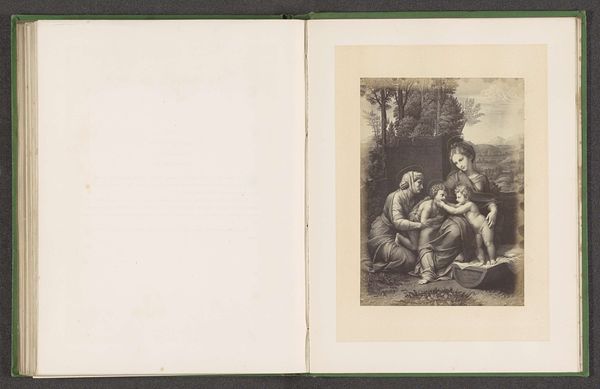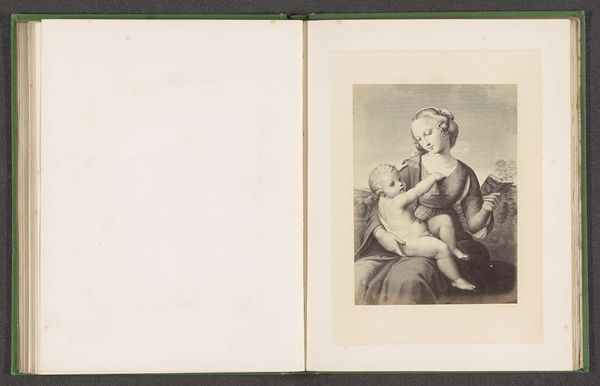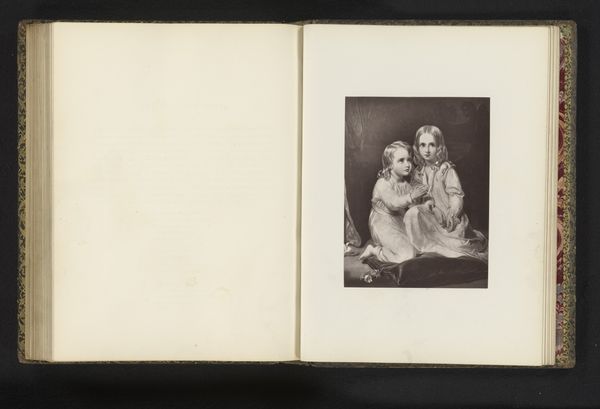
Fotoreproductie van een prent door Joseph Steinmueller van de Madonna del Prato door Rafaël before 1869
0:00
0:00
print, paper, engraving
#
portrait
#
ink paper printed
# print
#
landscape
#
paper
#
history-painting
#
italian-renaissance
#
engraving
Dimensions: height 161 mm, width 128 mm
Copyright: Rijks Museum: Open Domain
Curator: This is a photoreproduction of an engraving made before 1869 by Joseph Steinmueller of Raphael’s "Madonna del Prato". It’s printed on paper. Editor: It's interesting how a reproduction becomes its own distinct object. It almost feels removed from the original painting, softened and flattened. What can you tell me about it from your perspective? Curator: As a photoreproduction, it embodies the shifting values placed on art. We move from Raphael's direct application of pigment to Steinmueller, working as a craftsman using the reproducible medium of engraving to disseminate Raphael's image. This creates access to art, but it also transforms it into a commodity, something consumed visually through mass production. Think about the societal implications. Who could access Raphael's original painting, and who could access Steinmueller's engraving? Editor: That makes a lot of sense. So, the value isn't necessarily in the artistic skill of the engraver replicating the painting, but more in the *means* of its production and how that impacted distribution? Curator: Precisely! Consider the role of Joseph Cundall, the photographer. He’s mediating between the engraving and *us*. What does photography, as a mechanical reproduction of a reproduction, say about our relationship to artistic originality? Are we closer to Raphael, or further away? Editor: So many layers of creation! I see it less as a copy now, and more as an echo reflecting how art circulates within society and who gets to engage with it. Thanks! Curator: Absolutely. Understanding the materiality and production behind art opens us to its larger social and economic dimensions.
Comments
No comments
Be the first to comment and join the conversation on the ultimate creative platform.

